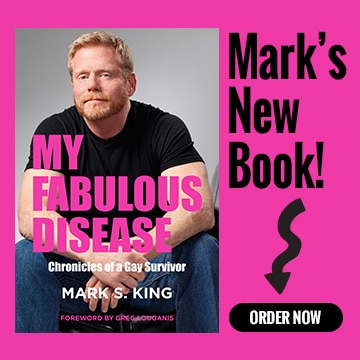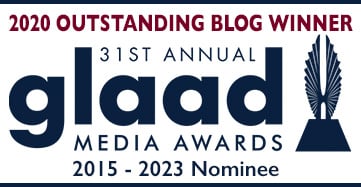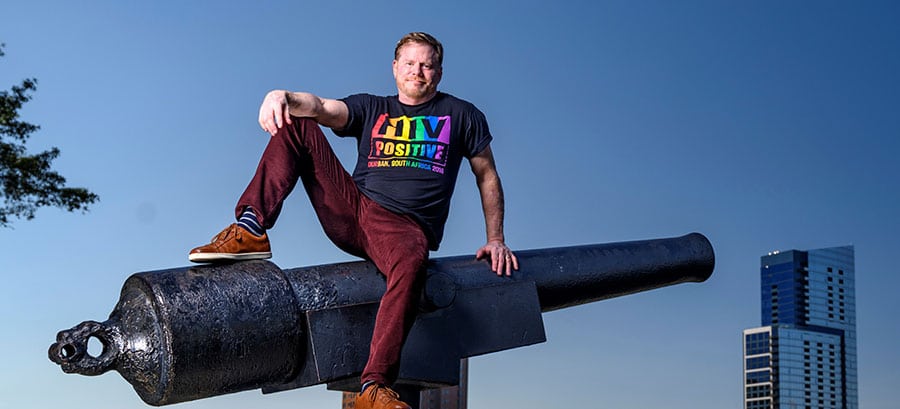This is a story about GLAAD’s 2024 State of HIV Stigma Report and why its botched release generated widespread condemnation from advocates throughout the HIV arena. It is also the story of how community leaders who keep their eye on the ball can collectively work through conflict without sacrificing grace and mutual respect.
On September 12, 2024, GLAAD released its fifth annual State of HIV Stigma Report. In the news materials and on online platforms, the nation’s largest queer media organization made a rookie mistake that would infuriate advocates and discredit the report itself. Sadly, the mistake actually makes the work of fighting stigma more difficult – and subjects the lives of people living with HIV to greater jeopardy
In the original GLAAD press release about the report, the headline proclaims that “HIV stigma declines…” In the news release, it goes on to state:
For the first time in five years, GLAAD’s State of HIV Stigma report found a statistically significant decline of HIV stigma in the U.S., with 85% of Americans saying they believe HIV stigma exists, down from 89% in 2020…
The news release got it wrong on two counts. First, GLAAD’s own data from the survey doesn’t measure HIV stigma. It measures whether people – random households in the country that were surveyed – believe that HIV stigma exists.
Because, as everyone knows, the best way to find out about a condition is to ask people who know little to nothing about it.
Secondly, the fact that these particular respondents think HIV stigma is less of a problem than previous respondents is arguably not an improvement. Respondents may answer in a way that shields their own biases. Or, more likely, they don’t know anyone with HIV who has explained to them the crushing social stigma attached to HIV or has confided that they are too ashamed to pick up their HIV medications from a pharmacy because they don’t want to be recognized.
Immediately after the news release, outlets around the country ranging from small city papers to queer media outlets repeated the false claim in their headlines. Sure, if anyone bothered to scroll past the headline or read the voluminous report itself, they would have found the findings to be nuanced. But GLAAD knows, or should have known, that a misleading headline will eclipse the text below it every time.
This is damaging to the work being done on the ground by support networks and coalitions of people living with HIV who, as a result of the GLAAD release, must work that much harder to explain the life-threatening consequences of HIV stigma, much less that it exists at all.
Response from the HIV community was swift and organized. An open sign-on letter led by Sero Project addressed to GLAAD director Sarah Kate Ellis was circulated and eventually signed by more than 50 organizations. It clearly explained the harm done and demanded action to correct the mistake.
There were back-and-forth emails between and among the parties, with allegations flung and defensive postures taken. But the mistake was clear. GLAAD eventually removed posts that contained the false claim from social media. The original press release was revised by GLAAD – but weeks after its release, meaning no one will see the new version. No retraction has been issued to neutralize the initial false claim.
To add insult to injury, GLAAD Director Ellis replied to the open letter with a blithely unfazed four-sentence response before kicking the issue down GLAAD’s organizational chart.
Ellis has bigger fish to fry, certainly, such as finding someone to dust the chandelier she purchased at GLAAD’s expense, choosing seats for one of her dozens of first-class flights, or shopping for more donor-funded decor for her home office that will bring just the right aesthetic to Zoom calls with Hollywood hotshots – all alleged in a recent New York Times front-page investigative report. Whatever Hollywood mogul cosplay Ellis may be engaged in, issuing retractions is evidently not consistent with her assumed character.
But I digress.
Here is where the story takes a turn toward the hopeful.
On September 27, the signers of the open letter received an email from DaShawn Usher, GLAAD Senior Director of Communities of Color and Media. Usher invited everyone involved to a video conference community briefing described “to provide clarity, address any concerns or misunderstandings, and engage in meaningful dialogue with anyone who wishes to attend.”
The call occurred on October 2nd. Usher had planned to moderate a panel invited by GLAAD to walk through the stigma report and explain the findings and methodology.
After delivering a carefully worded statement of apology from GLAAD, Usher invited initial remarks from attendees. Multiple hands flew up virtually. Usher wisely set the planned agenda aside to allow the advocates to speak for as long as they needed, keeping his own remarks to a minimum.
It was the right move. For the following ninety minutes, those advocates came down on GLAAD’s misstep like an emotional ton of bricks.
A who’s who of present-day HIV advocacy participated on the call, from powerhouse leaders to individuals with an illustrative story to tell. They included Mandisa Moore-O’Neal from the Center for HIV Law and Policy; Ronald Johnson, Chair of the US People Living with HIV Caucus; Tami Haught of Sero Project; Keiva Lei Cavena, Co-Director of Positive Women’s Network; and Harmony Zorio, a woman living with HIV in rural West Virginia.
The comments during the call are truly remarkable. They exude elegance, passion, and the power of lived experience. The call is also a rare window into how our HIV community leaders operate during conflict – heart first, and always laser focused on the people they represent. This call isn’t the first time these advocates have had to explain – to funders, to elected officials, to providers – how HIV stigma threatens our very lives, but the stories shared during the call have real immediacy and emotion. It reminded me why I am so proud to be a part of this community.
GLAAD had promised to make the video call available to anyone who could not attend. It has been nearly a week since the call, so I have included it here myself (Usher explicitly stated at the beginning and end of the call that it was being recorded and would be shared at some later point). This is the October 2nd video call in its entirety:
By the end of the call, assurances had been made to follow up with the coalitions of people living with HIV/AIDS and to include them in future GLAAD projects – a collaboration that could have prevented the stigma report disaster from happening. I am cautiously encouraged.
This isn’t the first time advocates have had to fight for a place at GLAAD’s table. Ten years ago, GLAAD released an HIV Media Guide that contained misleading information and used stigmatizing language. GLAAD wasn’t enthusiastic about working with the advocates living with HIV who called them out on the blunder and asked for changes. That episode produced assurances GLAAD would work with the community more closely. That promise did not materialize.
So, here we are again. While Usher acquitted himself admirably and other GLAAD staff on the call sounded similarly conciliatory, time will tell.
Meanwhile, the State of HIV Stigma Report itself now seems like a mere afterthought. GLAAD knows as well as anyone when you have lost the narrative. The report will always be defined by its damaging rollout. That’s a shame. But, if GLAAD embraces the lessons advocates are trying to teach them as a result of this fiasco, it just might be worth it.
It is notable that GLAAD is an organizational behemoth that spends more in a month than the combined annual budgets of every other organization represented on the video call. It is easy for that kind of budgetary dominance to spawn corporate arrogance about who it values, much less with whom it collaborates. When will GLAAD learn that its best partners are standing right here, waiting for the meaningful involvement we deserve?
And then you have the extraordinary power harnessed by the collective voices of people living with HIV, as represented so beautifully by the stream of advocates on the call who shared simple, compelling stories and stood up for those they represent.
I’ll put my money on them anytime.
Mark





